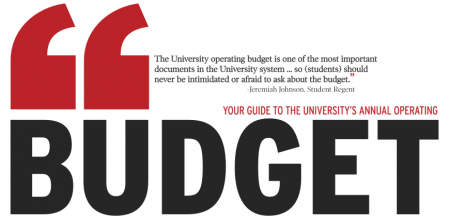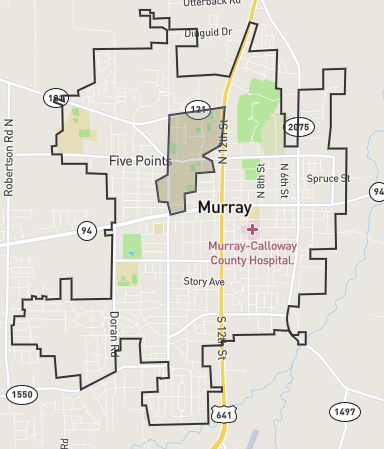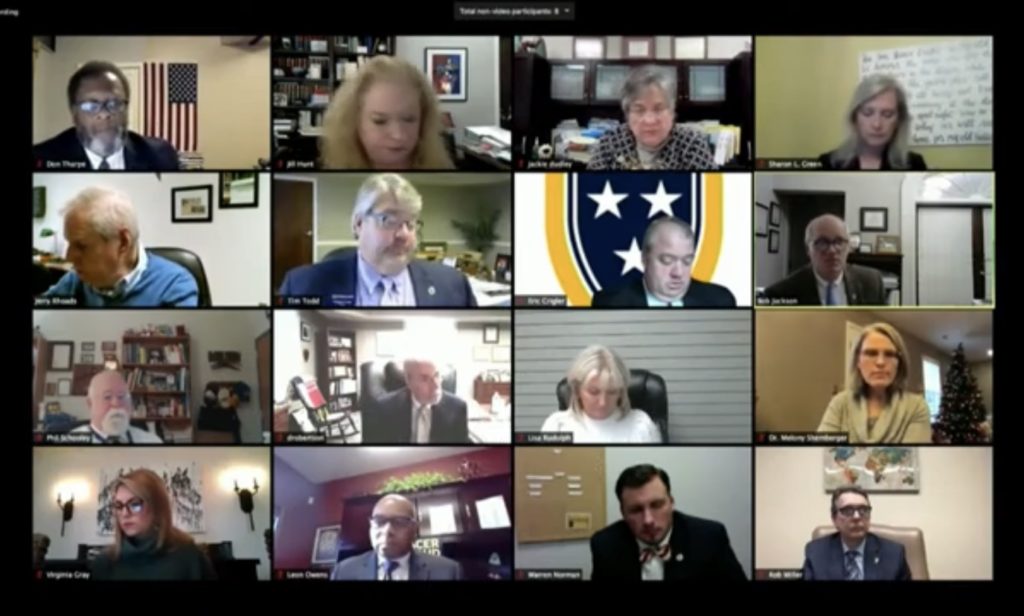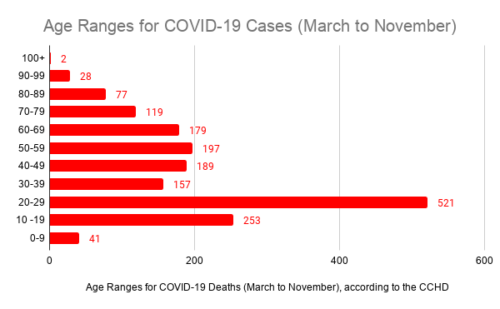 The Murray State administration prepares an annual operating budget, setting the guidelines for the expenditures and revenues of the University. The state government mandates businesses or institutions receiving public funding provide documentation regarding budgets.
The Murray State administration prepares an annual operating budget, setting the guidelines for the expenditures and revenues of the University. The state government mandates businesses or institutions receiving public funding provide documentation regarding budgets.
Jeremiah Johnson, student regent and Student Government Association president, said the operating budget shows the constituents of Murray State where all of the money is going and approximately how much the University gets from tuition, state appropriations and elsewhere.
“The University operating budget is one of the most important documents in the University system,” he said. “It is very important for students to know where their money goes and it is increasingly important for the students to know that once the budget is passed at the Board of Regents meeting it is public record, so they should never be intimidated or afraid to ask about the budget.”
Click here to see the University’s 2012-13 Operating Budget.
To maximize the effectiveness of the budget, scroll to the bottom of the document.
Tom Denton, vice president of Finance and Administrative Services, said the operating budget is established on a fiscal year basis to coincide with the state’s operating year.
“Murray State is considered a component unit of the entire state budget process and is included in both the state biennial budget and the state annual (actual) operating revenue and expenditure report,” he said.
The Board of Regents approved the 2012-13 budget at its June meeting.
“The greatest variable is whether the departments expend their budget expenditures, whether there are new revenue not budgeted, and whether departments expend their prior years’ carryover funds.” Denton said.
According to the 2012-13 operating budget, approximately $124 million has been budgeted for the education and general portion of the revenue budget. The grand total revenue budget, which includes the education and general section and auxiliaries, is approximately $152.7 million.
Students contribute $66.9 million to the education and general subtotal revenue budget, in the form of tuition and fees.
Denton said the format of Murray State’s budget includes the nationally standardized structure, which categorizes by departments, but the University budget also lists by area of responsibility: Presidential Accounts, Academic Affairs, Student Affairs, Institutional Advancement and Finance and Administrative Personnel.
“A vice president might have something contained within their area of responsibility which might not follow the national chart structure, which is why there are two ways the budget is formatted,” he said.
Each of the nine academic college/school budgets are reported in a similar fashion. For example, the Hutson School of Agriculture has an “area of responsibility” budget of approximately $6.7 million. This number reflects the total budget for the college, combining public services – such as the farms and the Breathitt Veterinary Diagnostic Center in Hopkinsville, Ky. – and academic services, including faculty and staff salaries.
The instructional budget for the Hutson School of Agriculture is almost $2.2 million – a difference of almost $4.6 million – which is made up primarily of faculty and staff salaries.
The salary differences between faculty, staff and administrators can vary greatly for a number of reasons, including the position itself, education level, essentiality and for faculty, the college in which they teach.
Johnson said one of the most troubling items on the budget is salary. He said as a student it did not make sense to him that some within the University, who have the same education level, would have such a large variance in pay.
“I guess when you factor in the size of the college and the number of students within it the salary difference can begin to make more sense,” he said. “It’s not the same thing across other areas of the University, coaches for instance, I don’t see it as fair that coaches make more money than anyone in the faculty or staff.”
Bonnie Higginson, vice president of Academic Affairs, said she could only speak about the academic nature of Murray State, but said the salaries among the faculty can vary for a number of reasons.
She said the biggest determinant is what the professor would be worth in the job market.
She said faculty in the Arthur J. Bauernfeind College of Business tend to have higher salaries because of what they are worth outside of the University.
“Some of the professors in business could make more outside of the University,” she said.
Don Robertson, vice president of Student Affairs, agreed with Higginson and said the market was the reason some faculty were paid more.
“Certain areas of employment pay more than others,” he said. “Scientists and doctors make more than teachers. In academia, certain disciplines pay more than others. It’s a reflection of what field you are in. It’s no different than the real world. A lot has to do with market and the supply and demand, based on where they’ve taught, services they have done and notoriety.”
He said time served at the University could also have an impact on the variation in salaries.
“If you look at the College of Humanities and Fine Arts, probably every student on campus is going to take classes in that college because of gen. ed classes,” Robertson said. “It’s going to have a larger faculty and more classes, so it will have a higher operating budget compared to agriculture, which is going to be a more narrow group of individuals taking those classes.”
He said there are many variables and it was impossible to say one area or position on campus was more important than another.
“Part of that is in the choice you make when you decide what to major in,” he said.
While faculty tend to have a higher salary than staff at Murray State, Denton said the average staff salary, excluding hourly-paid workers, was dependent upon three areas: market for the position, cost of living and standard benchmark salaries, which are gathered on a national level.
The budget across areas of responsibility, within the general and education fund portion, also varies greatly; Academic Affairs has a budget of approximately $71.3 million, while Student Affairs has a budget of approximately $7.3 million.
Robertson said it was not unusual for Academic Affairs to have a much larger budget than Student Affairs.
“The scope of Academic Affairs is much larger than Student Affairs,” he said. “Its budget includes each academic college, all of the faculty salaries and the services they provide.”
Robertson said the budget for Student Affairs was spread thin and there was not a lot of personnel in some areas, but said the office still has the dollars necessary to provide basic services.
Story by Chris Wilcox, News Editor.
































































































Kayla MacAllister • Nov 12, 2012 at 7:48 am
How much do your professors make? See "Operating Budget" link!